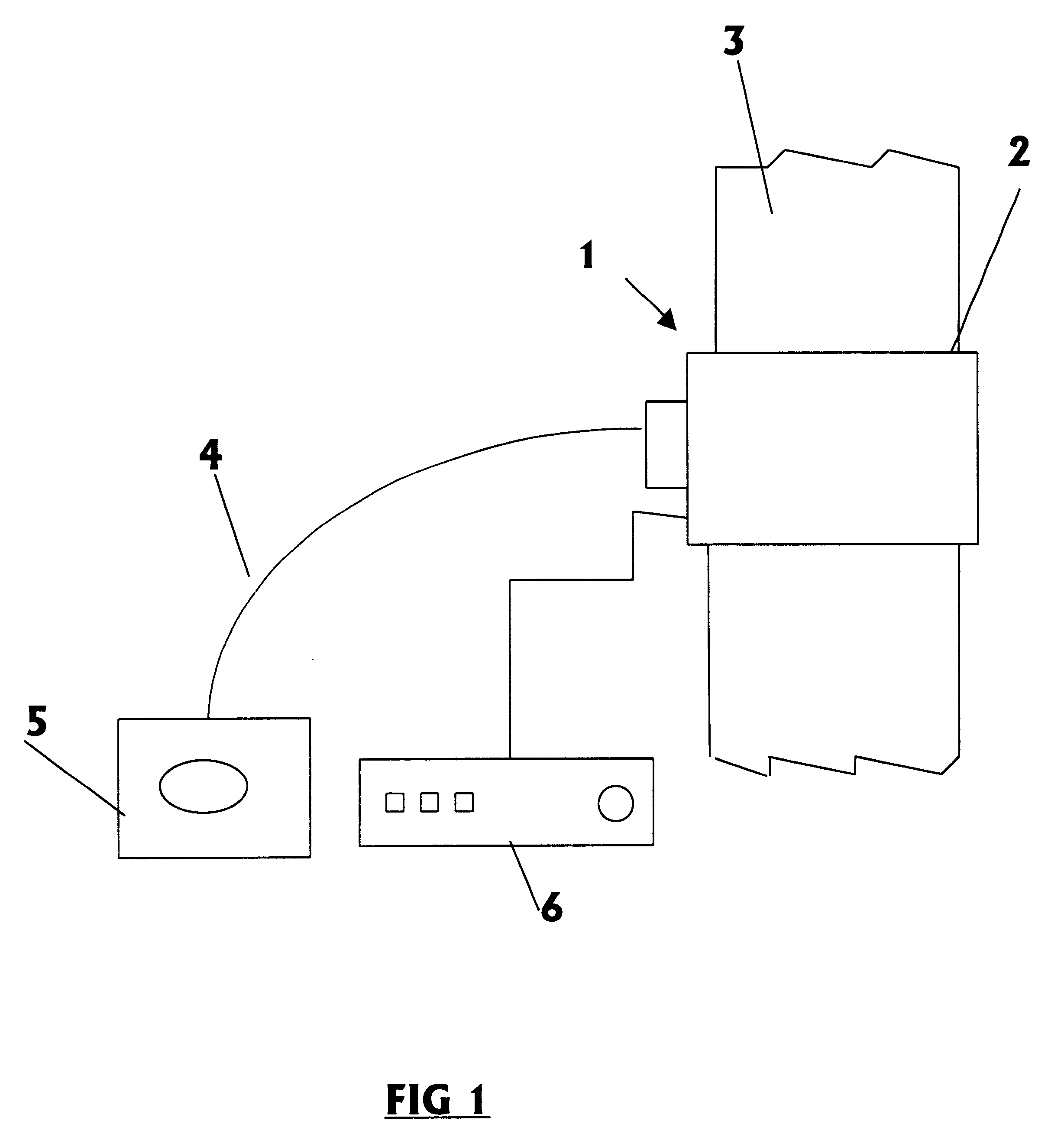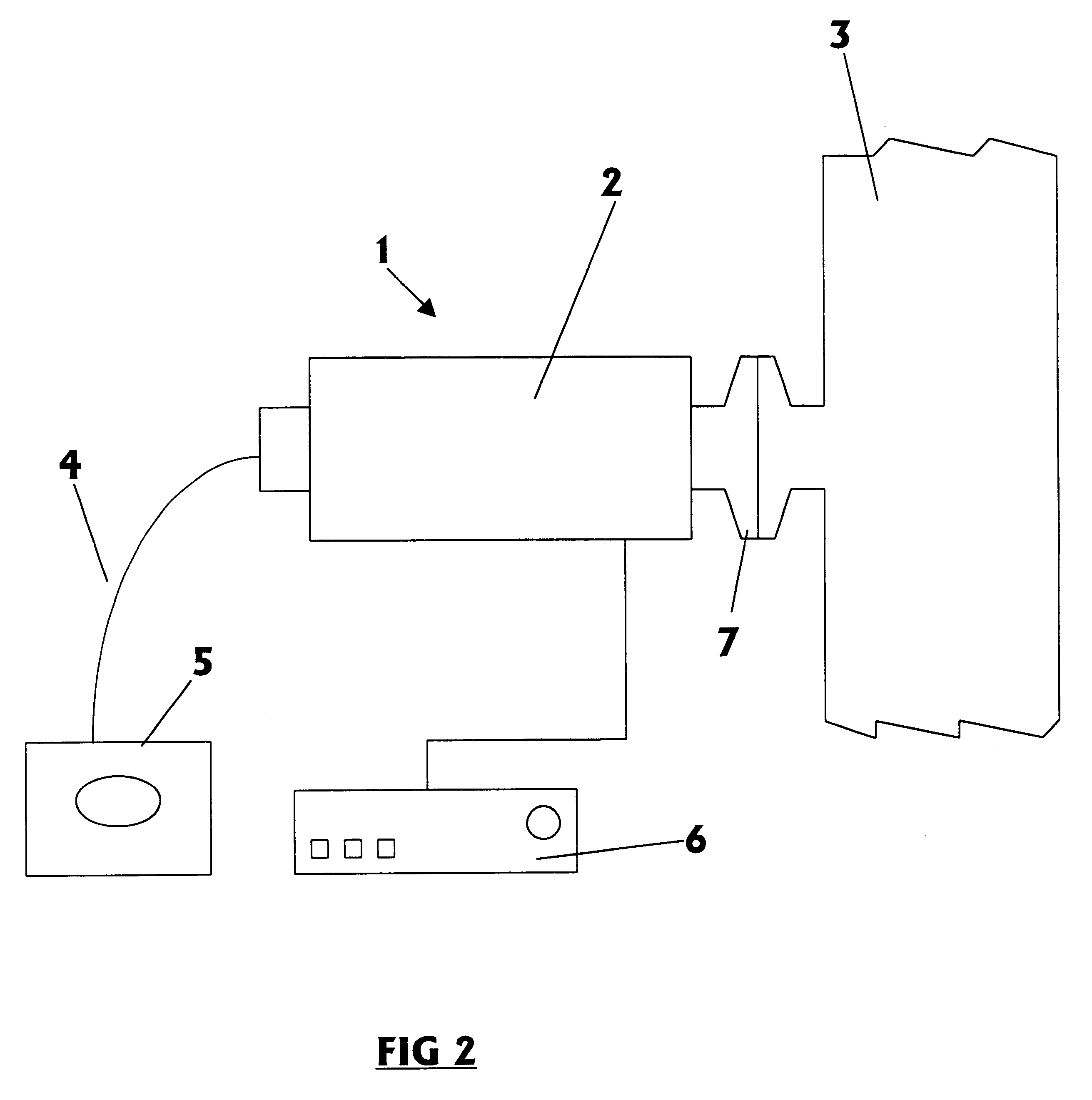Method and a system for identifying gaseous effluents, and a facility provided with such a system
a gaseous effluent and system technology, applied in the direction of optical radiation measurement, instruments, spectrophotometry/monochromators, etc., can solve the problems of large space occupied by a mass gas analyzer with differential pumping, dissuasion of investment cost and saving, and low cost of optical analysis technique, etc.
- Summary
- Abstract
- Description
- Claims
- Application Information
AI Technical Summary
Benefits of technology
Problems solved by technology
Method used
Image
Examples
Embodiment Construction
The gas analysis system 1 of the invention serves to analyze gaseous effluents contained in an enclosure 3 under controlled pressure. For example, the enclosure 3 may be a vacuum line 3 of a facility (not shown) for manufacturing semiconductor integrated circuits.
The operating principle of the gas analysis system 1 is based on ionizing the gases and on analyzing the radiation spectrum resulting from ionizing the gases.
For this purpose, the gas analysis system 1 includes apparatus for ionizing the gases to be analyzed, which apparatus is constituted by a dedicated plasma source 2 in contact with the gases in the enclosure 3, and generating a plasma from the gases to be analyzed. The plasma source 2 is powered by a generator 6 suited to the chosen type of plasma source 2.
In an embodiment, the plasma source 2 is a microwave source of the resonant cavity type or of the type using the surface wave propagation principle. in which case, the generator 6 is a microwave generator.
In another e...
PUM
| Property | Measurement | Unit |
|---|---|---|
| pressure | aaaaa | aaaaa |
| diameter | aaaaa | aaaaa |
| radiation spectrum | aaaaa | aaaaa |
Abstract
Description
Claims
Application Information
 Login to View More
Login to View More - R&D
- Intellectual Property
- Life Sciences
- Materials
- Tech Scout
- Unparalleled Data Quality
- Higher Quality Content
- 60% Fewer Hallucinations
Browse by: Latest US Patents, China's latest patents, Technical Efficacy Thesaurus, Application Domain, Technology Topic, Popular Technical Reports.
© 2025 PatSnap. All rights reserved.Legal|Privacy policy|Modern Slavery Act Transparency Statement|Sitemap|About US| Contact US: help@patsnap.com



